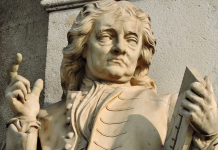
Traditional Thai Medicine: Buddhism, Animism, Ayurveda
, by C. Pierce Salguero
Hohm Press, 9781890772673, 134 pp. (incl. index and appendices), 2007
Thai Medicine is a tradition that began to form in the 13th Century in Thailand, a combination of beliefs and theories taken from the animistic indigenous religion, Buddhism, and medical theories from ayurveda and yoga. It remains a popular practice, existing alongside western medicine in 83% of hospitals in Thailand1, but Salguero fears that it is a dying practice, mainly supported by the elderly and tourists, and practiced by the older generations.
As the older generations die out, with them dies what is largely an oral tradition, as the knowledge of Traditional Thai Medicine has very rarely been written down in any form. This book is part of Salguero’s hope, that the theories and practices will be studied and committed to writing to preserve them before they are gone, and, as the director of the Tao Mountain School of Traditional Thai Massage and Herbal Medicine, he is qualified and has an honest interest in keeping the tradition alive.
This book is advertised on the back as “For Practitioners and Students of Thai Massage, Yoga, Ayurveda, and Buddhism” and that is to be kept in mind. If you are looking to learn any of these systems, this book will not be that useful for you, but if you already have the basics in one of these systems, it will help explore some of the history, variety and theory of Traditional Thai Medicine.
A bit over a third of the book is devoted to the history and formation of Traditional Thai Medicine, with the rest of the book focusing on some of the theory of sen (energy channels), the elements, humours, and the use of flavours in making cures. I found personally the diagrams on the energy systems interesting, as well as the variety of charts dealing with spiritual organs and flavours for different effects. Though I felt that the nature of the sen and energy points was not covered enough, literally a two page explanation on how the body works, I felt in general that the topics covered were lacking in enough detail to not be very useful, but as a side resource it works well enough.
So exactly as the back of the book says if you’re a practitioner or student of Thai Massage, Yoga, Ayurveda and Buddhism, this book makes a good reference, but if you’re looking to learn from a practical guide, this wouldn’t be the place to start, but would be a good supplementary text in your studies. The succinct nature of this work can be understood as so little to deal with Traditional Thai Medicine has been published that this is really an introduction into the field, and hopefully it will inspire others to put more of this endangered tradition into print.
- p. xi [↩]








